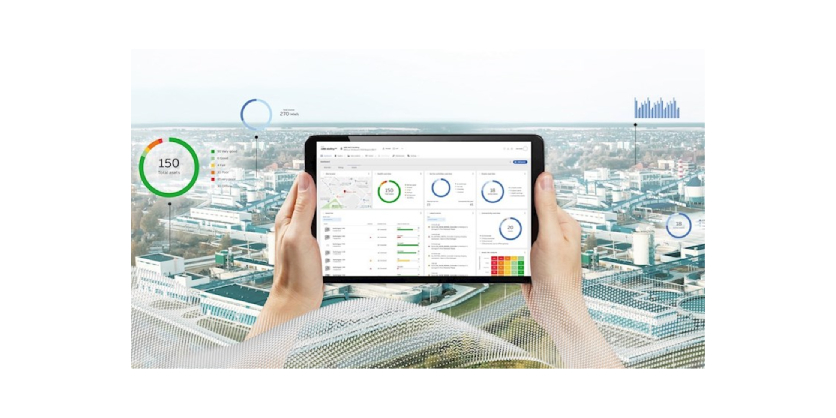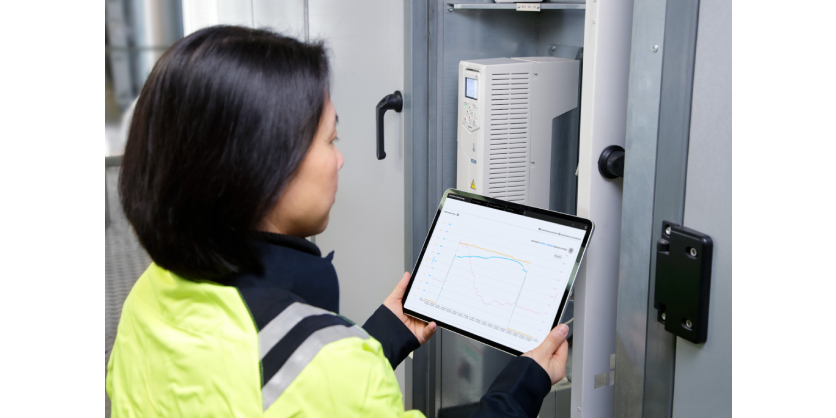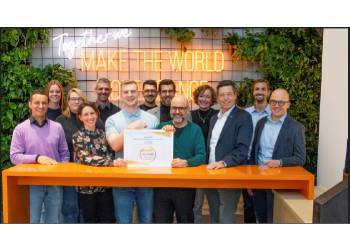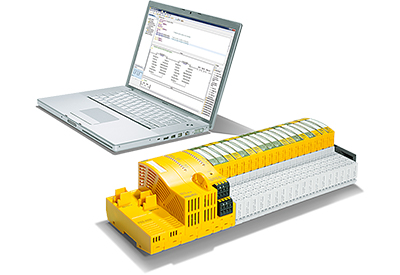Buildings Become Smarter, and More Sustainable, with ABB Technologies. A Canadian Focus
December 5, 2023

By Krystie Johnston
Advancements in smart buildings technology offer immense potential for companies and industries in terms of sustainability benefits. Smart thermostats and automatic lighting are well-known examples that can have a significant impact on energy efficiency. With buildings generating almost 30% of greenhouse gas emissions, there needs to be a more proactive approach to improving efficiency1. Smart building technologies offer many benefits: economic, environmental, societal, ecological. Robert Palajsa, Territory manager for the smart power and smart buildings division for southern Ontario at ABB Canada, discusses ABB’s smart building technologies and how they can help businesses to be more sustainable and enjoy these benefits.
Smarter buildings keep getting smarter
Smart buildings use hardware and software synergistically to optimize any number of systems, including HVAC, lighting, water, electricity, security, and any other interrelated components or systems to intelligently create the environment for occupants. Industry 4.0 is exponentially accelerating this connectivity with the Internet of Things (IoT), machine learning (ML), and artificial intelligence (AI). The result is devices that control equipment and machines to operate as efficiently as possible under the direction of software and cloud computing.
“It is the connectivity of these smart devices, working together in tandem, that has an impact on energy reduction. When we talk about our carbon footprint, we are talking about the balance of our energy consumption compared to our energy reduction. Canada has 2030 and 2050 goals to reduce emissions, and these smart building technologies are making companies and buildings more energy efficient – and more competitive.”
Palajsa can forecast the direction that building technology will take in the future. He sees the potential to use these technologies to assess a company’s current energy usage and to make intelligent decisions about when these devices consume energy so that they not only benefit from the best commodity rate, but to also reduce or eliminate unnecessary consumption.
For example, in Ontario, electricity rates fluctuate based on the time of day; by being able to align machines or equipment so that they consume energy when the rate is lower, or avoid consuming energy when the rate is highest, money and energy can be saved. Using only the amount of energy needed also reduces emissions that are produced unnecessarily, making these businesses more sustainable and reputable as well.

Determine where you are, then decide where you are going
With 20 years of experience in the automation industry, Palajsa sees it all too often: companies either do not see a need to change, which is no longer the ideal approach, or they do not know where to start. The reality is that by implementing smart building technologies, companies will be protecting their bottom line and be making long term investments for their future. The technology is ready.
A smart commercial building now uses up to 40% less energy, and with these energy savings, owners can recoup the cost of equipment, installation, and maintenance in as little as two years – and also drastically cut emissions2. The challenge, then, is not whether to start, but where to start. Palajsa says companies need to better understand where they are today, then they can begin planning where they want to go.
The first step is to conduct and audit. Facility operators or managers, those charged with finding cost savings and increasing building safety, need to have a clear understanding of the assets in their buildings that are consuming energy, and to have a baseline of what their energy consumption is. ABB’s Energy and Asset Manager is part of the ABB Ability™ platform that collects data from various assets which are connected digitally to visualize this information, analyze it and contextualize it, and make better decisions so these assets operate more intelligently.
The system provides insights that enable smarter decision making with the addition of AI and ML, the system continually gets smarter, calibrating itself over time. The result is proven to reduce costs and carbon footprint, while creating a healthier environment for people and society.
Palajsa adds, “It’s great that more and more hardware is being digitalized, but on its own it’s just a signal. The real value is determining what to do with the data and information now that they have it. How do they use it to make the best decisions to reduce their energy consumption, or conduct predictive maintenance, or achieve more transparency in their operations? And that is what ABB Ability™ is.”
What is ABB Ability™?
ABB Ability™ is a digital platform that operates on an annual subscription basis and can be implemented via a cloud-based network or on an internal localized network. ABB Ability™ is where data collected from digitalized devices is visualized, analyzed, and contextualized so that users can make better decisions about their overall energy consumption, how and when this energy should be used as well as offer the ability to optimize overall operations. ABB has thousands of components that are ABB Ability™-ready with the technology to connect to this platform already built within them.
As a complete solutions provider, ABB also has a free-standing unit called Ekip UP that can connect to non-ABB manufactured products. Ekip UP can connect non-digital switch gear, power panels and other electrical equipment to the ABB Ability™ platform, enabling these systems to produce the digital data needed in order for the devices to be optimized electrically.
With the Ekip UP device, or an ABB Ability™-ready component, the platform allows the user to monitor thousands of different data points in the system. Palajsa says, “Customers can choose what is important for us to monitor. We can see the power consumption in a facility, and we can see when and where we are using an exorbitant amount of power. We can look at load shedding so that we start up the critical loads first, then the other systems, and keep our peak consumption at a normalized level.” He adds, “Without the data, and without being able to collect that data and visualize it and make those intelligent decisions, it may not be as efficient.”
New buildings or retrofits, smart building technologies can make a huge impact
Smart building technologies are ready, and they are making a difference in facilities across the country and around the world. There are great opportunities for saving energy and reducing emissions by taking a holistic approach to building connected smart societies. From new buildings to retrofits, smart building technologies can make a huge impact. For example, a large university in Ontario recently used ABB’s building automation technologies, including ABB Cylon, to develop a completely carbon-neutral portion of their building. With the help of ABB and their third-party integrators, they were able to get government funding, adding to their overall cost savings.
“The government has introduced several incentive plans for these types of initiatives. They want to help, but most people do not know how to access these incentives or how to be a part of these programs. At ABB, we work with partners locally in Ontario, for example, that know how to access these programs. Our partners work with the companies to navigate the government programs to get rebates and implement a strategy to win.” For example, energy efficiency programs and incentives for business and industry can be found at Save on Energy.

The project at the university evolved to include reusing electricity and waste heat, the addition of electric vehicles, and smart charging systems. Palajsa adds, “What a great example to showcase what is possible. The next generation of graduates coming out of that university will better understand that society can reduce consumption here in our country.”
ABB is a trusted solutions partner who prioritizes their customers. For Palajsa, when he is called upon, it is more, “What can I support you with? What are your objectives? “Let us help you get there with our solutions and innovative products and technology.”
At ABB, they are ready to build a safer, smarter, and more sustainable world for future generations. Smart building solutions are just one part of the bigger picture. Interested in learning more?
More Information
ABB Buildings and Living Solutions
Editor’s notes:
- https://new.abb.com/news/detail/108109/smart-buildings-the-smart-choice-for-sustainability
- https://www.linkedin.com/pulse/answering-call-smart-societies-2021-tarak-mehta/
Related Story
Smart Buildings: the Smart Choice for Sustainability
The sustainability benefits of smart homes are well publicised and those of us who have digital power outlets, smart thermostats and automatic lights know firsthand about the energy and cost savings. However, much less discussed is the broader adoption of smart building technology by companies and industries. With buildings generating nearly 30 percent of all greenhouse gas emissions,1 it would be impossible to ignore how quickly our path to net zero would expedite if entire sectors adopted them.





